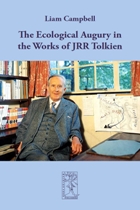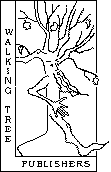Review of The Ecological Augury in the Works of JRR Tolkien

 (to the main page on The Ecological Augury in the Works of JRR Tolkien)
(to the main page on The Ecological Augury in the Works of JRR Tolkien)
The following review appeared in the September 2012 edition of Beyond Bree on pages 6-7, and is reproduced here with kind permission.
Beyond Bree is the newsletter of the Tolkien Special Interest Group of American Mensa. Subscriptions are open to all lovers of Tolkien's Middle-earth, Mensan and non- Mensan alike. For more information on Beyond Bree, please visit http://www.cep.unt.edu/bree.html

THE ECOLOGICAL AUGURY IN THE WORKS OF JRR TOLKIEN
Review by Ryder W. Miller
The Ecological Augury in the Works of JRR Tolkien by Liam Campbell; Walking Tree Publishers; 2011. Paper, 305 pp.
Following other similar explorations of the Environmental themes in works of JRR Tolkien, Liam Campbell seeks here to explore the depths of Tolkien's belief about the subject and argue about the place Tolkien deserves in the history of the modern Environmental Movement.
The key concern of this study is to assert that Tolkien was a writer who adhered, throughout his work, to a consistent and systemic representation of ecological themes, threads and motifs which together amount to an augury against the dangers of ecological apathy and the pursuit of progress and technological advancement in the absence of an environmental conscience. (pp. 2-3)
Campbell contends "that there is a clearly observable ecologically themed undercurrent to Tolkien's fiction that reflects, consciously or not, his environmental anxieties for a world he believed was too readily embracing the machine age." (p.3)
Dr. Liam Campbell from Northern Ireland is a independent scholar who holds a PhD and a great appreciation for Tolkien. He concurs with Tom Shippey that Tolkien was "The" writer of the Twentieth Century showing that readers and fans gave him that status, but also that he had an important environmental message to send at the time of the publication of The Lord of the Rings.
By "ecological augury" Campbell is referring to the danger that is threatening the natural world and those who have vision necessary to stop it. It is the mirror of Galadriel that he is making his point with, the "seed" or inspiration to this study, but it is also the fears of the heroes that if something is not done that an unseemly fate awaits Middle-earth:
Indeed in "The Mirror of Galadriel" we may find the very essence of, or a defining symbol for, the ecological augury which I contend radiates from the pages go Tolkien's fiction. The mirror shows, like aspects of Tolkien's work, how the world may appear if the crisis of the age is not addressed, but as Galadriel points out, everything reflected there may not come to pass. (pp. 24-5)
World Society has been given a similar challenge before and after with the hopes of saving the world.
The seven main sections of the book include: "Rage against the Machine", "Contrasting Environmental Personas in The Lord of the Rings: Tom Bombadil and Saruman", "Contrasting Environmental Personas in The Lord of the Rings: Gandalf and Sauron", "Seeing the World through Elvish Eyes: An Examination of the Human & Non-Human in Tolkien's Fiction", "Tales That Grew in the Telling", "Mirrors of the Golden Wood", and "Troubles with the Trees".
Campbell is adept at contrasting the environmentalists in the tale, Tom Bombadil and Gandalf, with their evil counterparts Saruman and Sauron. He also writes about what it is like to look at the natural world through the eyes of the nature infused and appreciative elves.
Sauron and Saruman are not presented in a multifaceted way, rather just being compelled to have power and control of a world that they are destroying in the process of there goals of domination. Saruman represents the blind side of industry and narrow minded politics. The eye of Sauron has a single purpose. We have seen their worldly counterpart in a world we had polluted in search of profits.
Campbell does draw some conclusions that could be considered debatable like his statement that four out of the five istari failed, where it may be argued that things may have been much worse if Radagast and the Blue Wizards Alatar and Pallando were not out there somewhere else doing things that did not make it into the tale. There are wide areas of Middle-earth that don't get explored. Maybe theirs was just a tale Tolkien did not get to write yet, leaving those territories for some other day. Gandalf is presented here as being the only success, but he may not have known what fate the others met. Tom Bombadil is also equated with the traditional Green Man and considered the "spirit of nature under threat", rather than like some others believed a Maia or Vala as described in the tales of a earlier age in The Silmarillion.
Campbell is also more concerned with those who followed Tolkien rather than predecessors and precursors. One could argue that Tolkien was not breaking new ground here with his preservationist stance, but he certainly struck a chord with many people anyway. Tolkien did object to ravaging of the countryside and the onset of the automobile. Campbell argues that he was not a Luddite, but such a tag also has good nature loving connotations and should not be considered solely a pejorative.
Many of his references are to the not widely known environmentalists, rather than the very very famous American ones, Rachel Carson being an exception who started things again with the opening fable she includes in Silent Spring. Campbell has instead focused on the "thought, theories and works of prominent ecologists, ecocritics and environmental commentators such as Jonathan Bate, Barry Commoner, Cheryl Glotfelty, Bill McKibben, William Rueckert and Paul B. Sears." (p. 24)
The book also spends much of its time focusing on the good guys without really explaining the bad guys, but this is usually the case in a polarized fantasy tale where those who develop are usually the heroic subjects on their journey.
Tolkien did address some of the topical issues of the his day and reading him can be deeply moving. He also found a necessary middle ground between preservationism and human centric religion. Campbell writes:
Perhaps to say that Tolkien was rising above his religious creed is putting the case a little too strongly, but rather I would suggest that he incorporated his green philosophy into this Catholic faith and promoted, through the culture of his elves and others, an environmental ethos which can legitimately consider the natural world to be a valued creation of God in its own right, valued for its beauty as well as its sustaining worth. (p. 173)
Tolkien follows in the tradition of the Celts who as told here also had Christian themes.
Sadly not explored here is a reaction to an evolutionary argument which would point out in its desire to protect threatened and endangered species that maybe the reason we no longer see the "monsters" of the past is because they have become extinct. Spiders, Wolves, and Blackbirds can match the wonder and ugliness of created fantastical creatures such as Dragons and Hippogriffs, etc., but they are still marvels of evolution.... These monsters could have been part of the biodiversity of the past. Maybe they weren't so ugly after all. It is hard to miss that which we have never really seen. Beauty is supposed to be in the eye of the beholder. The "ugly" fens and marshes of the past are now known to be the home to fascinating birds and plants. Such a stance may not be possible in a theological fantasy as shown here in this analysis which does not acknowledge Charles Darwin. This dichotomy between good and evil is prevalent in genre literature which is concerned with symbols and archetypes and not Campbell's fault.
All told Ecological Augury is a welcomed addition to Tolkien studies and certainly convinces readers of the importance of his widespread concerns and vision. Gandalf having timelessly pointed out to generations: "All we have to decide is what to do with the time that is given us." (Fellowship, "The Shadow of the Past", p. 50)

Read other reviews of The Ecological Augury in the Works of JRR Tolkien
Read reviews of other Walking Tree Publishers books

